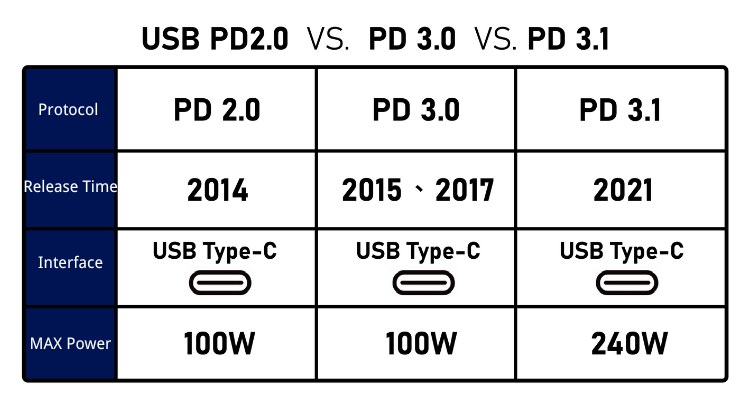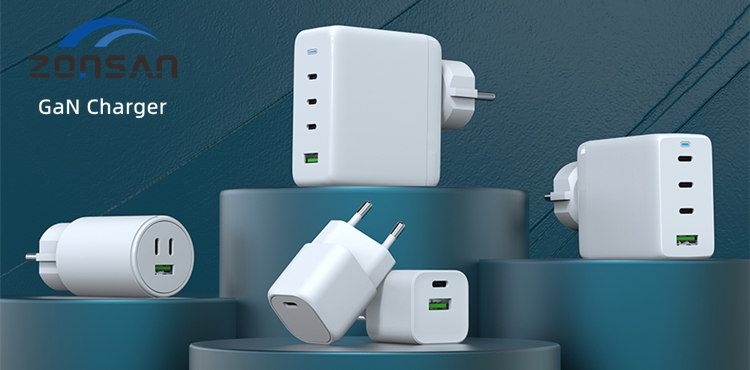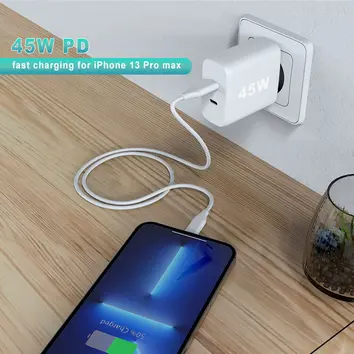Differences from USB PD2.0 3.0 3.1
USB PD3.1 is literally a minor update of USB PD3.0, but in terms of power, it is a qualitative leap forward. what are the differences between USB PD3.1 and the previous version?

USB PD2.0
USB PD2.0 fast charging standard was released in August 2014, not only specifying the USB Type-C interface as the only standard interface, but also giving this interface more functions, such as charging, data transfer, audio transmission, etc. In terms of charging USB PD2.0 defines support for 5V3A, 9V3A, 12V3A, 15V3A, 20V5A output, with a maximum charging power of 100W.
However, it was still the era of the prevalence of Micro USB, cell phone market has been basically divided by QC, AFC, FCP, PE and other private fast charging protocols, USB PD fast charging is more difficult to popularize. This situation lasted until 2015, when Apple released the industry's first New MacBook equipped with USB PD2.0 fast charging standard, and USB PD fast charging officially opened the road to popularity in the field of consumer power.
USB PD3.0
In November 2015, USB PD fast charging ushered in a major version update, entering the era of USB PD3.0 fast charging. USB PD3.0 has three main changes compared to USB PD2.0: adding a more detailed description of the device's built-in battery characteristics; adding the function of device software and hardware version identification and software update through PD communication, and adding digital certificates and digital signature function.
In short, from the charging parameters, USB PD3.0 and USB PD2.0 have not changed, and still support 5V3A, 9V3A, 12V3A, 15V3A, 20V5A output, with a maximum power of 100W. However, this update does not improve the confusing situation of fast charging standards in the cell phone market, as fast charging standards are still separate and incompatible with each other.
USB PD3.0 PPS
In order to change the situation of split fast charging protocols in the cell phone market, the USB-IF Association released an important update to the USB PD3.0 standard in February 2017, adding the programmable power supply PPS to the USB PD3.0 standard.
PPS belongs to a type of Power Supply supported in USB PD3.0, a power supply that can achieve voltage and current regulation using the output of the USB PD protocol. the PPS specification integrates the current high-voltage low-current, low-voltage high-current two charging modes. Voltage regulation down the same 20mV a file, only a tenth of the QC3.0 standard at the time, the regulation is more accurate.
And the USB-IF Association also reached a consensus with Thiel Labs, aimed at making the PPS fast charging standard unified fast charging technology. At present, PPS fast charging has become a very high share of the Android cell phone camp fast charging standard, with the phone built-in charge pump, can achieve efficient high-power fast charging, Xiaomi, Samsung, Meizu and many other brands of models are in use.
USB PD3.1
USB PD3.1 fast charging standard is actually based on the update of USB PD3.0 PPS fast charging.
The USB PD3.1 fast charging specification divides the power into two ranges: Standard Power Range (SPR for short) and Extended Power Range (EPR for short). The standard power range is the current mainstream USB PD3.0 PPS fast charging standard on the market, the maximum charging power remains unchanged at 100W; while the new 28V, 36V, 48V three voltages belong to the extended power range, the three voltages correspond to the maximum output current of 5A, the maximum output power can reach 240W.
In addition to the three new fixed voltages, the USB PD3.1 standard also adds three adjustable voltage classes (AVS for short) to the expanded power range, 15V-28V 5A, 15V-36V 5A and 15V-48V 5A. The minimum voltage regulation step of AVS is 0.1V, and continues to use the PDP-based constant power limit mode.
To summarize:
USB PD2.0 is the real mass production commercial fast charging standard, also laid the foundation for the realization of USB PD fast charging unification. USB PD3.0 is more in the protocol identification function to do updates, charging specifications did not change.
The USB PD3.0 PPS fast charging standard adds programmable voltage levels and achieves compatibility with most private fast charging protocols, making it the most widely used fast charging standard in the Android cell phone market today.
USB PD3.1 mainly expands the scope of application of the USB PD fast charging standard, in addition to cell phones, notebooks and other consumer products, but also for monitors, servers, power tools, security POE power supply, then the field, to achieve the vision of "everything can be charged".

OEM PD Charger Recommendation
The Advantage of ZONSAN's charger product:
1. overcurrent protection
2. input overvoltage protection
3. outut overvoltage protection
4. short circuit protection
5. overcharging protection
6. temperature protection
The Advantage of ZONSAN's charger product:
1. overcurrent protection
2. input overvoltage protection
3. outut overvoltage protection
4. short circuit protection
5. overcharging protection
6. temperature protection

Read More

Read More

Read More